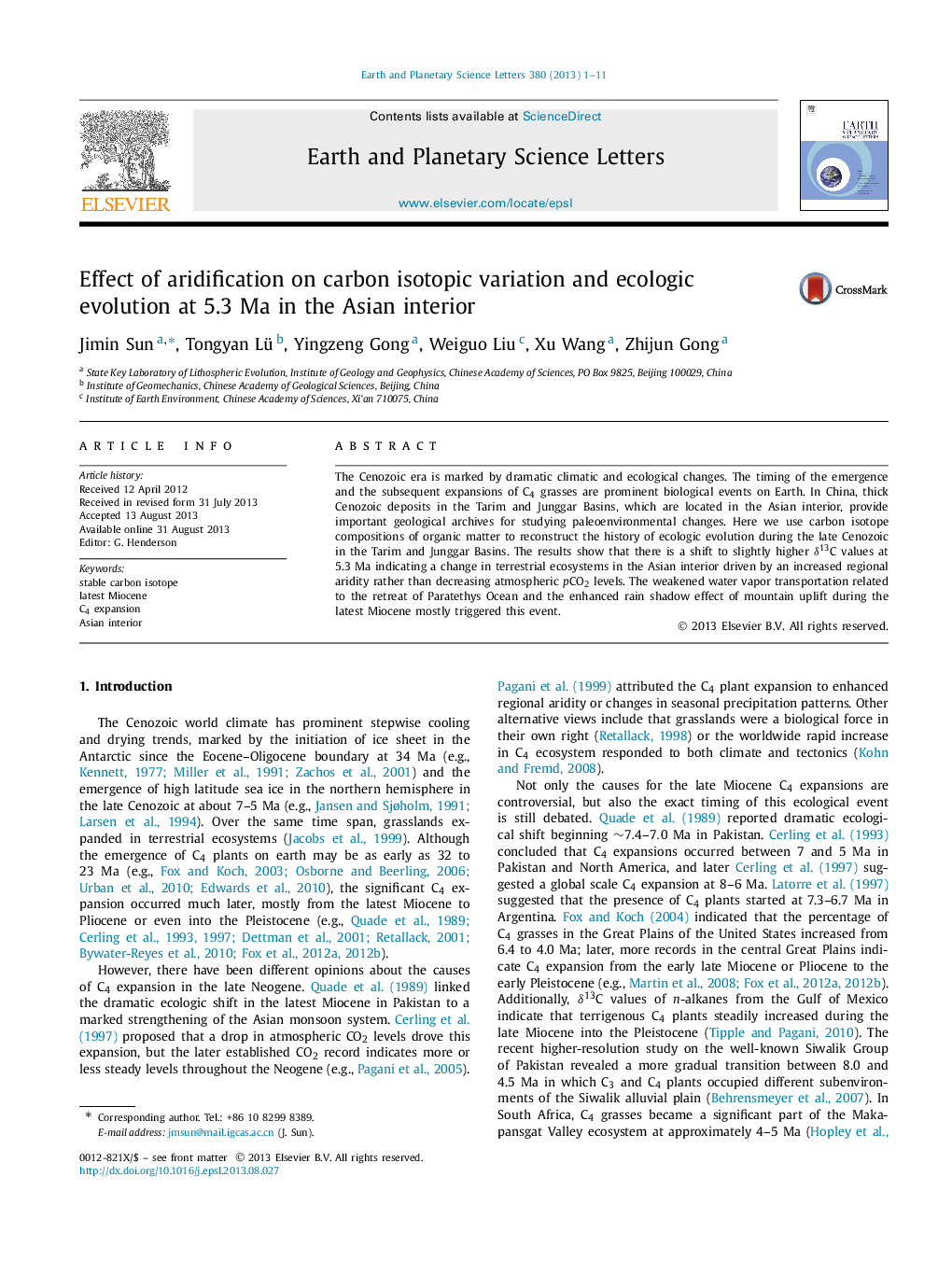| Article ID | Journal | Published Year | Pages | File Type |
|---|---|---|---|---|
| 4677039 | Earth and Planetary Science Letters | 2013 | 11 Pages |
•Constructing long-term δ13C records from 26.5 to 2.0 Ma in the Asian interior.•Ecological shift beginning at about 5.3 Ma ago.•Ecological shift is a response to enhanced regional aridity.•Neotethys retreat and tectonic uplift triggered the aridity and ecological shift.
The Cenozoic era is marked by dramatic climatic and ecological changes. The timing of the emergence and the subsequent expansions of C4 grasses are prominent biological events on Earth. In China, thick Cenozoic deposits in the Tarim and Junggar Basins, which are located in the Asian interior, provide important geological archives for studying paleoenvironmental changes. Here we use carbon isotope compositions of organic matter to reconstruct the history of ecologic evolution during the late Cenozoic in the Tarim and Junggar Basins. The results show that there is a shift to slightly higher δ13C values at 5.3 Ma indicating a change in terrestrial ecosystems in the Asian interior driven by an increased regional aridity rather than decreasing atmospheric pCO2 levels. The weakened water vapor transportation related to the retreat of Paratethys Ocean and the enhanced rain shadow effect of mountain uplift during the latest Miocene mostly triggered this event.
Graphical abstractFigure optionsDownload full-size imageDownload high-quality image (225 K)Download as PowerPoint slide
